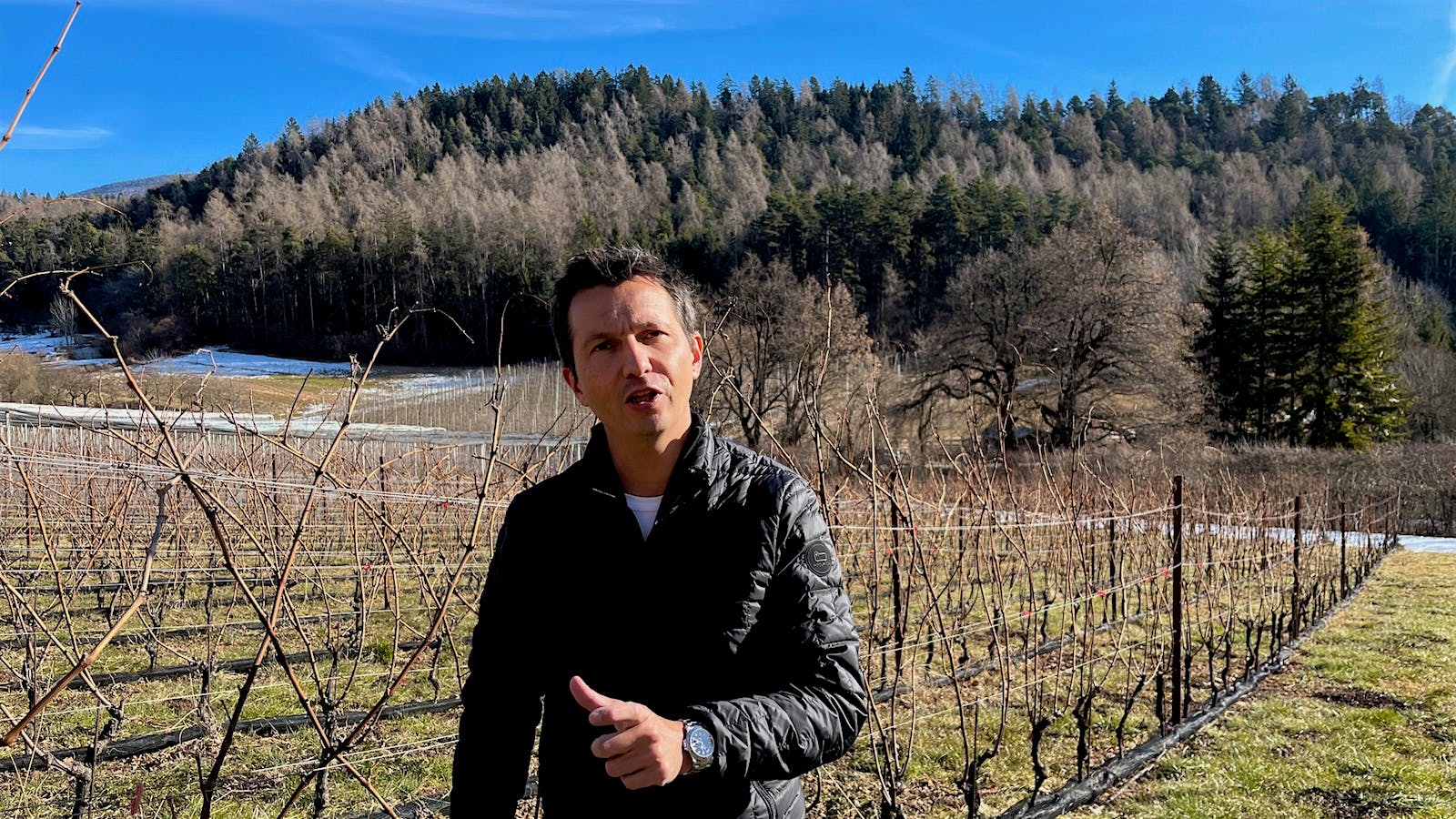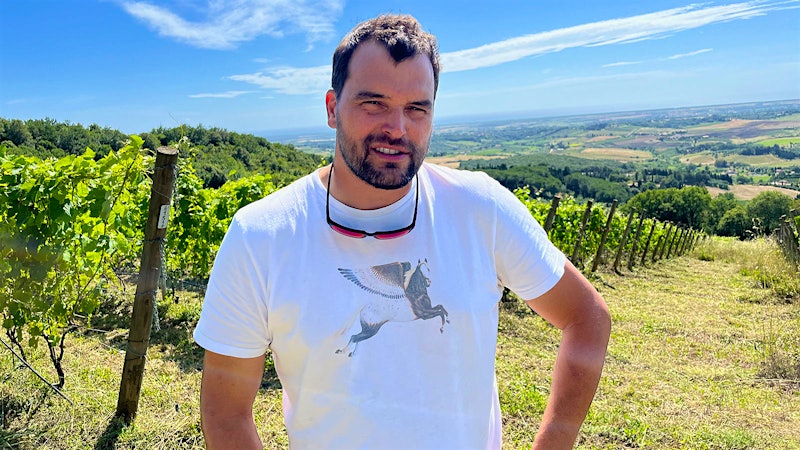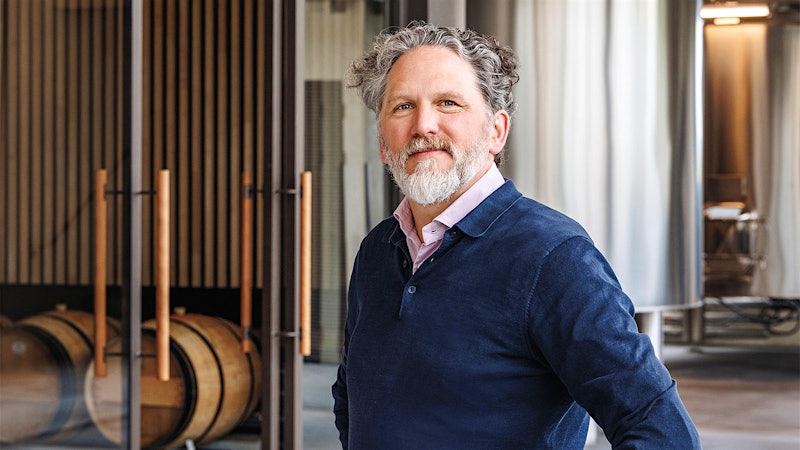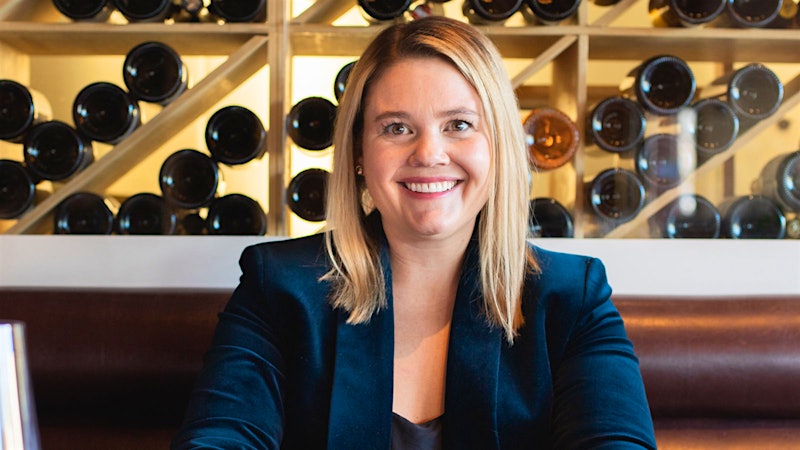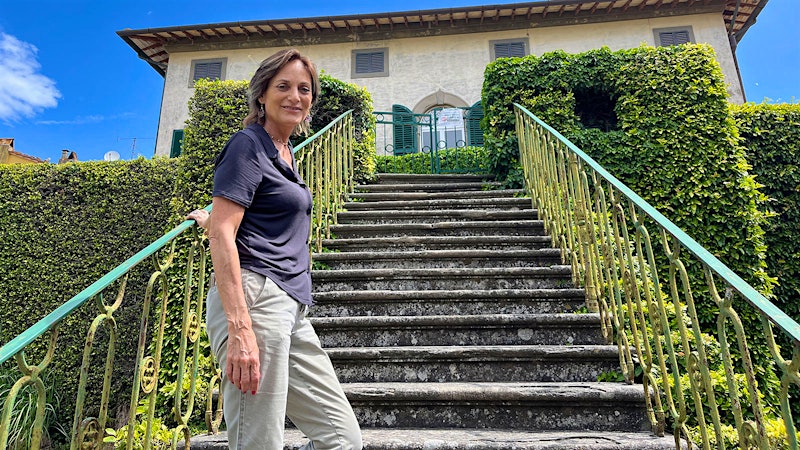Nicola Biasi works in an unusual place for one of Italy’s most talented young enologists: the remote, apple-growing hills of Northern Italy’s Dolomite Mountains.
Here, at 3,000 feet, surrounded by the orchards, peaks and forests of Trentino’s Val di Non, Biasi is a Pied Piper on the cutting edge of disease-resistant hybrid grapevines.
Vine hybrids that cross established European varieties with vines used for American rootstock have been around for decades in Northern European countries. In recent years, they’ve been gaining ground across the continent, including wine giants France and Italy.
The appeal is obvious. Europe is moving towards more sustainable agriculture and organic farming. But climate change and higher temperatures are fueling the spread of vine-crippling fungal diseases such as downy mildew, which devastated the 2023 wine harvest in parts of Italy. Resistant vines promise healthy crops with far fewer fungicide treatments in the vineyards.
It’s a niche in which Biasi has a particular hallmark. He’s not just interested in the practicality of new varieties, but also in their potential for greatness.
“We have to work for quality, quality, quality,” says Biasi. Youthfully lean and soft-spoken at age 42, he has the intentness of someone who has bet his career on his vision.
“There is a lot to be done. People don’t want to drink wine because it’s sustainable,” he says. “They want to drink wine because it’s good. If it’s also sustainable, that is an added value.”

Since 2017, on this cold mountain perch, Biasi has produced Lilliputian quantities of a meticulously farmed and vinified white wine called Vin de La Neu (“Wine of the Snow” in local dialect). It’s made from Johanniter, a 1960s-era crossing of Riesling with a German hybrid developed for breeding.
Biasi’s vineyard, less than one acre in size, is tightly planted with head-trained vines cultivated for miniscule yields of fruit per plant. The wine is barrel-fermented and barrel-aged in the family home that he transformed into a small, sleekly designed, eco-friendly winery. The result has become something of a cult wine, retailing for about $170 a bottle, with only 80 cases made.
Vin de La Neu offers a complex mix of citrus notes and saltiness balanced with structure and a whiff of Riesling-like aromatics. But Biasi warns against such comparisons.
“It’s not Riesling,” he says. “With hybrids, we are making new wines.”
Biasi and two other enologist associates have spread their consulting work to boutique wineries across Italy, with 10 of their 25 clients forming the “Resistenti” network to spread the message about the diverse range of new hybrids.
“It’s a delicate moment,” he says, “because if we put wines on the market that aren’t good, it will be game over.”
Biasi knows something about making good wines.
A native of Friuli and a second-generation enologist, at 25, he became the in-house winemaker for Marilisa Allegrini’s Tuscan estates: Poggio San Polo in Montalcino, where he became director, and Poggio al Tesoro in Bolgheri.
After nine vintages with the Allegrinis, Biasi broke out on his own as a consultant while experimenting with the Johanniter he had planted back home.
The Resistance Grows: Rise of the PIWIs
Resistant grape varieties are often grouped by the cute acronym PIWI for the German word pilzwiderstandsfähige (“fungus-resistant”). Across Europe, they’ve gained some traction among organic producers.
In the last two years, French wine authorities approved the use of resistant hybrids in the classic regions of Champagne (where the white variety Voltis can make up 5 percent of vineyard plantings and 10 percent of blends) and in Bordeaux (where three new white hybrids and one red are permitted at those same levels, following 2021 approval of Portuguese and other grapes).
In Italy, resistant hybrids aren’t yet allowed in DOC appellation wines, but about three dozen varieties are permitted in half of Italy’s 20 regions for wines bearing a regional IGT designation.
Biasi preaches against the pitfalls of the early years of resistant hybrids, in which they were grown on poor sites, with little knowledge of how to vinify them.
“To make good wine, you need to grow it in good places, and you need a dedicated enology,” he says.
So, just as Chardonnay is vinified differently than Sauvignon Blanc, Johanniter calls for different handling than other hybrids like German-origin Solaris and Italy’s Soreli.
The Resistenti network is using seven modern hybrids—including Johanniter, Solaris and Soreli—to make a flagship blend called Renitens, which is sourced from Biasi’s vineyard and five of his northern Italian clients.
Bottled simply as an Italian white, Renitens is required by law to be labeled as a non-vintage wine. It’s a complex, slightly aromatic, mouth-filling white. A mere 100 cases are made, selling for about $65 a bottle. The network’s second wine is the lighter, easy-drinking Baby Renitens (100 cases, $35 a bottle), vinified without spending time in wood barrels. Both wines are set to be imported into the U.S., through New York, before summer.
Expanding beyond Italy, Biasi and his Tuscan associate enologist Martina Casagrande recently bought a 2.5-acre Riesling vineyard in Germany’s Mosel region that they plan to replant this year to equal parts Riesling and Johanniter.
“We believe in this as the future of quality and sustainability,” Biasi says.
Is Genetic Editing Next?
The future of viticulture may soon face a crossroads. As some viticultural researchers search for new rootstocks and hybrids, others on both sides of the Atlantic argue for more expedient and controversial ways to genetically modify existing varieties.
Among them is Attilio Scienza, the dean of Italy’s ampelographers, who says making hybrids from Italian reds is impractical.
“Nero d’Avola, Nebbiolo and Sangiovese have much longer histories [than northern white varieties] and are very complicated,” he says. Instead, he advocates genetic editing [such as CRISPR] to reduce disease sensitivity without changing a vine’s other characteristics. “The problem is, once you talk about DNA, it’s like talking about the devil.”
That, of course, lies in the details. Like many, I’m a romantic Old World wine lover who would rather not think about the technology toolbox.
But, I think a vine revolution is coming in some form or another. It’s important to join the conversation and think about what “quality, quality, quality” means to us.


